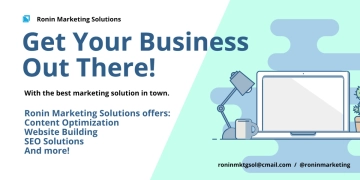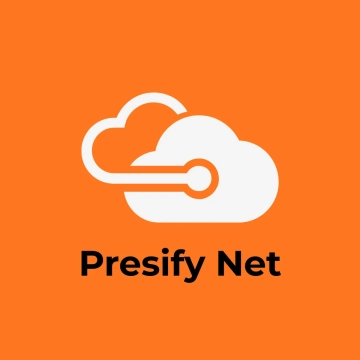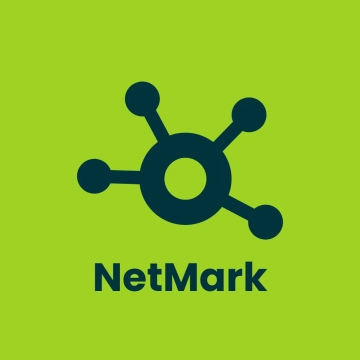Free B2B Digital Marketing Strategy

1. Introduction to B2B Digital Marketing Strategy
1.1 Overview of B2B Digital Marketing
B2B digital marketing refers to the use of online platforms and technologies to reach and engage with other businesses. Unlike B2C (business-to-consumer) marketing, B2B strategies focus on developing relationships between businesses and making decisions based on a complex buying process, often involving multiple stakeholders and longer sales cycles.
In 2050, B2B digital marketing will be powered by AI, data analytics, and machine learning to deliver hyper-targeted content and optimize the customer journey. By leveraging technologies like chatbots, predictive analytics, and automation, [Your Company Name] can streamline its marketing efforts, reduce manual processes, and achieve greater efficiency.
B2B digital marketing is increasingly focused on building long-term relationships, which can be achieved through value-driven content, personalized communication, and seamless customer experiences. For [Your Company Name], embracing digital tools will help establish trust and credibility, allowing the company to connect with prospects and clients at various touchpoints throughout the buyer's journey.
1.2 Importance of B2B Digital Marketing in 2050 and Beyond
By 2050, digital marketing will be an even more integral part of the overall B2B business strategy. Technologies like AI, machine learning, and augmented reality will transform the way businesses interact with potential customers. As competition increases and buyer expectations evolve, businesses will need to focus on delivering a personalized experience that speaks directly to their target audience.
In particular, B2B buyers are becoming more informed and independent, with many preferring to research products and services online before engaging with sales teams. To meet these expectations, [Your Company Name] must adopt strategies that emphasize self-service, relevant content, and personalized solutions, ensuring that the buyer journey is as frictionless as possible.
Key trends shaping B2B digital marketing in 2050 include:
AI-Powered Marketing Automation: Advanced AI tools will automate repetitive tasks, provide deeper insights into customer behavior, and optimize content and campaigns.
Voice Search and AI Chatbots: Voice assistants like Alexa and Google Assistant will become integral to B2B search queries, and intelligent chatbots will help businesses provide immediate, 24/7 assistance.
Data Privacy and Ethical Marketing: With stricter regulations surrounding data collection, businesses will need to adopt ethical marketing practices and ensure transparent data usage to maintain customer trust.
Omnichannel Marketing: B2B buyers will expect a seamless experience across digital touchpoints, from social media to email to company websites.
2. Setting Clear Objectives for B2B Digital Marketing
2.1 Defining Key Performance Indicators (KPIs)
For a digital marketing strategy to be successful, it is essential to have measurable KPIs that provide insight into the campaign’s effectiveness. These KPIs will serve as a basis for evaluating performance and adjusting tactics as needed.
For [Your Company Name], the primary KPIs will focus on lead generation, brand awareness, customer retention, and revenue growth:
Lead Generation: This refers to the acquisition of new leads who are likely to convert into paying customers. Metrics to track include the number of qualified leads, lead conversion rate, and lead source.
Brand Awareness: It’s essential to track how well [Your Company Name]’s brand is known within its industry. Metrics for this include organic traffic, social media engagement, impressions, and search engine rankings.
Customer Retention and Loyalty: Keeping existing clients is just as important as acquiring new ones. Retention can be tracked through customer lifetime value (CLV), repeat purchase rates, and customer feedback surveys.
Revenue Growth: This is the ultimate indicator of marketing success. [Your Company Name] should track monthly, quarterly, and yearly revenue growth resulting from digital marketing campaigns.
2.2 SMART Goals for B2B Digital Marketing
Setting SMART goals ensures that the marketing team remains focused and aligned with business objectives. Here are examples of SMART goals for [Your Company Name]:
Objective | SMART Goal Example |
|---|---|
Lead Generation | Increase the number of qualified leads by 25% in 6 months. |
Brand Awareness | Boost organic website traffic by 30% over the next 12 months. |
Customer Retention | Achieve a 90% customer retention rate in the next 3 years. |
Revenue Growth | Increase online sales by 15% year-over-year from 2051 onward. |
These goals will be reviewed quarterly to ensure they are still relevant, and the necessary resources will be allocated to ensure they are achieved.
3. Target Audience and Market Research
3.1 Identifying Target Audience
Understanding the target audience is the foundation of a successful digital marketing strategy. [Your Company Name] needs to define its target audience based on factors such as industry, company size, and job roles. Below are some sample details for defining target audiences:
Industry Focus: If [Your Company Name] offers enterprise software solutions, the target industries might include IT, healthcare, finance, and manufacturing.
Job Titles: The primary decision-makers might include Chief Technology Officers (CTOs), Chief Financial Officers (CFOs), and IT Managers who are responsible for implementing technology solutions.
Company Size: [Your Company Name] may target large corporations with [500+] employees or mid-market companies with [100-500] employees, depending on its product offerings.
To gather insights, [Your Company Name] should develop detailed buyer personas for each segment, outlining their challenges, goals, and purchasing behavior.
3.2 Market Research Methodology
Market research enables [Your Company Name] to make data-driven decisions that ensure the strategy resonates with its audience. Effective market research methods include:
Surveys and Polls: These should be distributed to current clients and prospects to identify their pain points, purchasing habits, and needs. For example, an online survey could ask businesses about their top priorities for the next fiscal year.
Competitor Analysis: By using tools like SEMrush or SpyFu, [Your Company Name] can analyze competitors’ digital presence, ad strategies, and content marketing efforts. Understanding their strengths and weaknesses will reveal opportunities to differentiate and improve.
Customer Feedback: Regularly seeking feedback from existing clients through surveys, NPS (Net Promoter Score) analysis, or focus groups will help ensure [Your Company Name] meets their evolving expectations.
Market research should be a continuous effort that informs all aspects of the digital marketing strategy.
4. B2B Digital Marketing Channels
4.1 Content Marketing
Content marketing is one of the most powerful tools for attracting and nurturing B2B leads. High-quality content builds trust, educates the audience, and positions [Your Company Name] as a thought leader in its field. The types of content to prioritize for [Your Company Name] include:
4.1.1 Types of Content
Blog Posts: These should address topics that are relevant to the target audience’s pain points. For example, a blog post titled "How AI is Revolutionizing Supply Chain Management" can attract professionals in logistics and manufacturing.
Ebooks and Whitepapers: These long-form resources provide in-depth analysis and insights on industry topics, offering value in exchange for lead information. A whitepaper on "The Future of Blockchain in Healthcare" could appeal to CIOs in the medical industry.
Case Studies: A well-detailed case study showing how [Your Company Name] helped a client overcome a challenge provides proof of the company’s expertise and results.
Videos: Short-form videos, such as client testimonials or product demos, can engage prospects who prefer visual content. Video content will likely become even more popular in 2050, especially interactive videos with AI-powered suggestions.
4.1.2 Content Distribution Channels
The content should be distributed across multiple channels to maximize its reach:
Website and Blog: All content should be published on [Your Company Name]’s website, optimized for both desktop and mobile users.
Social Media: Platforms like LinkedIn, Twitter, and Facebook are critical for reaching B2B audiences. Posts can be scheduled for peak engagement times, and video content can be shared to encourage interaction.
Email Marketing: Email is one of the most direct ways to communicate with leads and customers. A series of educational emails could provide value while gradually nudging the prospect toward a purchase.
4.2 Search Engine Optimization (SEO)
SEO will continue to be an essential tool for driving organic traffic. In 2050, SEO will be more about delivering relevant content and superior user experience (UX) than just keyword optimization. [Your Company Name] should invest in the following aspects of SEO:
4.2.1 On-Page SEO
Keyword Optimization: AI tools like SEMrush or Moz can help identify the right keywords for content, making sure that [Your Company Name]’s website ranks higher in search results.
Content Structure: Properly structuring content with headers, internal links, and a clear, concise layout will not only improve readability but also enhance SEO performance.
Mobile Optimization: With mobile search accounting for over [70%] of global web traffic, it’s imperative that [Your Company Name]’s website is optimized for mobile users.
4.2.2 Off-Page SEO
Link Building: Engaging in strategic link-building efforts, such as guest posts or acquiring backlinks from authoritative sites, will help improve domain authority and SEO rankings.
Influencer Marketing: Collaborating with influential industry figures can boost credibility and traffic, leading to more backlinks and exposure.
4.3 Social Media Marketing
In 2050, social media will be even more critical for B2B brands. [Your Company Name] should prioritize building a strong presence on LinkedIn, Twitter, and emerging platforms.
4.3.1 Content Strategy for Social Media
Engagement should be the goal. Share industry insights, interact with followers through comments, and join relevant groups or conversations. [Your Company Name] could regularly post about new technologies, events, and product launches.
4.3.2 Paid Social Media Campaigns
Investing in paid ads will be crucial for reaching highly targeted business decision-makers. LinkedIn Sponsored InMail, for example, allows for personalized messaging to decision-makers in specific industries, increasing the likelihood of engagement.
5. Lead Generation and Nurturing
5.1 Creating a Lead Magnet
Lead magnets are essential tools for attracting potential clients by offering value upfront in exchange for their contact details. In 2050, lead magnets will play an even more crucial role in converting prospects into qualified leads, and as such, they must align with the needs and pain points of the target audience.
For [Your Company Name], creating highly relevant, high-quality lead magnets will allow the company to collect data on interested businesses and nurture these leads into paying customers. Some effective lead magnet examples for [Your Company Name] in 2050 include:
Ebooks and Whitepapers: Providing valuable educational resources in the form of ebooks, whitepapers, or industry reports will continue to be a primary method for generating leads. For instance, an ebook titled “AI Solutions for the Future of Finance: A B2B Guide” could resonate with financial sector decision-makers.
Webinars and Live Demos: Hosting in-depth webinars or live product demos provides the opportunity to showcase [Your Company Name]’s expertise while giving prospects a chance to interact with subject-matter experts. A webinar on "Leveraging Blockchain for Better Supply Chain Transparency" would attract professionals in logistics, manufacturing, and retail.
Exclusive Templates and Checklists: Providing downloadable templates, tools, or checklists that help businesses improve their operations will help establish [Your Company Name] as a trusted resource. A template like “Customizable Marketing Strategy for Enterprise B2B Companies” can provide immediate value to busy decision-makers looking to streamline their processes.
Free Trials or Product Samples: Offering a free trial of software or service is one of the best ways to convert a prospect into a paying customer. For example, offering a [30]-day free trial for a software product that automates business processes can allow leads to experience the product firsthand before making a purchasing decision.
The goal of these lead magnets is to generate leads that are not only interested but also aligned with [Your Company Name]’s offerings, thereby ensuring a higher conversion rate in the long run.
5.2 Lead Nurturing
Once leads are acquired, it is crucial to nurture them through a series of touchpoints that guide them toward becoming customers. Lead nurturing is an ongoing process that aims to build a relationship with the prospect over time. In 2050, advanced marketing automation tools and AI will play a significant role in delivering personalized experiences to potential clients.
5.2.1 Email Drip Campaigns
Email drip campaigns will remain a cornerstone of lead nurturing in 2050. These campaigns involve sending a series of pre-scheduled emails that guide prospects through the sales funnel, gradually moving them from awareness to consideration and, eventually, decision-making. Each email should provide value, whether through educational content, industry insights, or product demos.
For example, a drip campaign targeting IT decision-makers might look like this:
Email 1 (Awareness): Introduction to [Your Company Name] and an offer to download an ebook titled “The Future of IT in Manufacturing: A Roadmap to Success.”
Email 2 (Consideration): A deeper dive into the benefits of adopting [Your Company Name]'s software, including case studies and testimonials.
Email 3 (Decision): A personalized offer for a [14]-day free trial of [Your Company Name]'s product, along with a demo video showing how it helps companies in the manufacturing industry.
The key to successful email nurturing is relevance and timing. AI-powered platforms can help tailor the messaging based on user behavior, ensuring that each email resonates with the recipient’s specific needs.
5.2.2 Marketing Automation
Marketing automation is essential for scaling lead nurturing efforts while maintaining personalization. By automating processes such as email sequences, social media posts, and content distribution, [Your Company Name] can engage with prospects at the right time and through the right channel.
AI-driven platforms like HubSpot, Marketo, and Salesforce can help track leads’ interactions with content, emails, and websites. This data allows [Your Company Name] to send targeted content based on a lead’s stage in the buying process. For instance, if a lead frequently interacts with case studies about healthcare automation, [Your Company Name]’s automation platform can send additional content related to healthcare trends or product features relevant to that prospect's needs.
Effective nurturing is about establishing trust and staying top of mind without overwhelming the prospect with irrelevant information. Automation allows businesses to nurture leads at scale while ensuring that the right message is delivered at the right time.
6. Measurement and Analytics
6.1 Tracking Performance with Analytics
In 2050, the ability to track and measure the success of digital marketing campaigns is essential to improving performance. Using analytics tools, [Your Company Name] can gain valuable insights into campaign effectiveness, customer behavior, and areas for improvement. Accurate data collection is more crucial than ever, with AI and machine learning now providing predictive insights that drive smarter decisions.
6.1.1 Website and Traffic Analytics
The first step in tracking performance is analyzing website traffic to understand the sources, volume, and user behavior. Tools like Google Analytics, Adobe Analytics, or AI-powered platforms will offer detailed reports on various aspects of website performance, including:
Traffic Sources: Understanding where your visitors are coming from (organic search, paid ads, social media, etc.) helps optimize your marketing spend. If paid ads contribute to [40%] of your site traffic, it might be worth increasing the ad budget.
User Behavior: Tracking how visitors interact with the site will help identify friction points that might be causing high bounce rates. Heatmaps, A/B testing, and session recordings can provide insights into how visitors engage with content and pages.
Conversions: Tracking conversions, whether it’s signing up for a newsletter or completing a purchase, is key to evaluating the effectiveness of your call-to-actions (CTAs). Analyzing the conversion funnel will help pinpoint where prospects drop off and what can be done to improve the process.
For example, if a landing page for a product demonstration is attracting traffic but not converting visitors into leads, it may indicate the page is not effectively conveying the value of the product. Adjusting the copy or adding social proof can help increase conversions.
6.1.2 Social Media and Engagement Metrics
Social media engagement provides critical insights into how well content is resonating with your audience. Metrics to track include:
Engagement Rate: Likes, comments, shares, and other forms of engagement provide a direct measure of how interesting and relevant your content is. For instance, [Your Company Name] might notice that posts about industry trends in AI garner more engagement than product updates.
Follower Growth: The number of new followers is an important metric for assessing brand awareness. A sudden spike in followers can indicate that a piece of content went viral or that an influencer partnership was successful.
Click-Through Rate (CTR): The CTR of social media ads is a key metric to evaluate whether paid social campaigns are effectively targeting the right audience. For example, a high CTR on a LinkedIn Sponsored InMail campaign targeting CTOs could indicate that the messaging is highly relevant.
Using these data points, [Your Company Name] can continuously optimize its content strategy to ensure that it is meeting the needs and interests of its target audience.
6.2 Adjusting Strategies Based on Data
Analytics alone won’t drive success—acting on the data is where the magic happens. As [Your Company Name] monitors campaign performance, it is essential to make data-driven adjustments to continually optimize marketing efforts.
6.2.1 A/B Testing
A/B testing allows marketers to compare two versions of a webpage, email, or ad to determine which performs better. This can be applied to various aspects of digital marketing, including email subject lines, landing pages, and CTA buttons. For instance, [Your Company Name] could test two variations of an email subject line to see which one generates a higher open rate. This data will then inform the future creation of marketing materials to ensure optimal performance.
6.2.2 Campaign Optimization
Based on performance data, [Your Company Name] should continually optimize campaigns by reallocating resources toward the most successful tactics. If a particular ad set is driving more conversions, it may be worth investing more in that channel while reducing spend on underperforming strategies.
Similarly, tweaking the targeting parameters for paid campaigns can help improve performance. For example, if AI-driven analysis suggests that a particular audience segment is highly engaged but not converting, it may be beneficial to adjust the messaging or offer a tailored discount.
Ultimately, data allows [Your Company Name] to make informed decisions, optimizing campaigns to yield the highest ROI possible. Continuous monitoring, testing, and refinement will ensure that digital marketing strategies stay agile and effective in a rapidly evolving landscape.
7. Conclusion
In 2050, the B2B digital marketing landscape will be more dynamic, data-driven, and technology-focused than ever before. To succeed, [Your Company Name] must take a proactive approach to digital marketing by adopting innovative tools, setting clear objectives, and implementing highly targeted strategies across multiple channels.
From creating highly relevant lead magnets to nurturing leads with personalized content and measuring performance with advanced analytics, the path to success in B2B marketing lies in delivering value at every stage of the customer journey. By embracing AI, automation, and data-driven decision-making, [Your Company Name] will be positioned to build stronger relationships with customers, enhance brand visibility, and drive revenue growth in the years to come.
The future of B2B marketing is bright, and with the right strategy and tools, [Your Company Name] will remain a leader in its industry.
- 100% Customizable, free editor
- Access 1 Million+ Templates, photo’s & graphics
- Download or share as a template
- Click and replace photos, graphics, text, backgrounds
- Resize, crop, AI write & more
- Access advanced editor
Maximize your digital marketing with the B2B Digital Marketing Strategy Template from Template.net. This editable and customizable template helps you design comprehensive marketing strategies for your B2B business. Personalize it using the AI Editor Tool to achieve your marketing goals. Get started now!





























